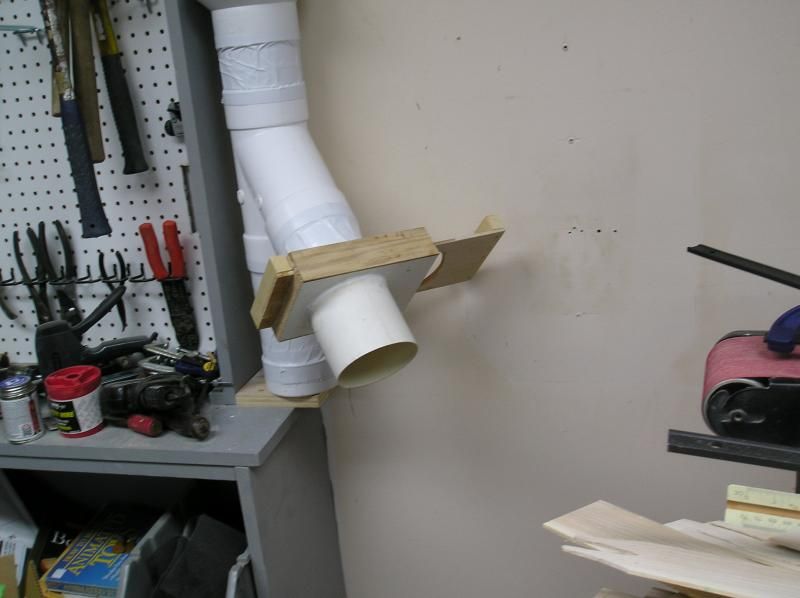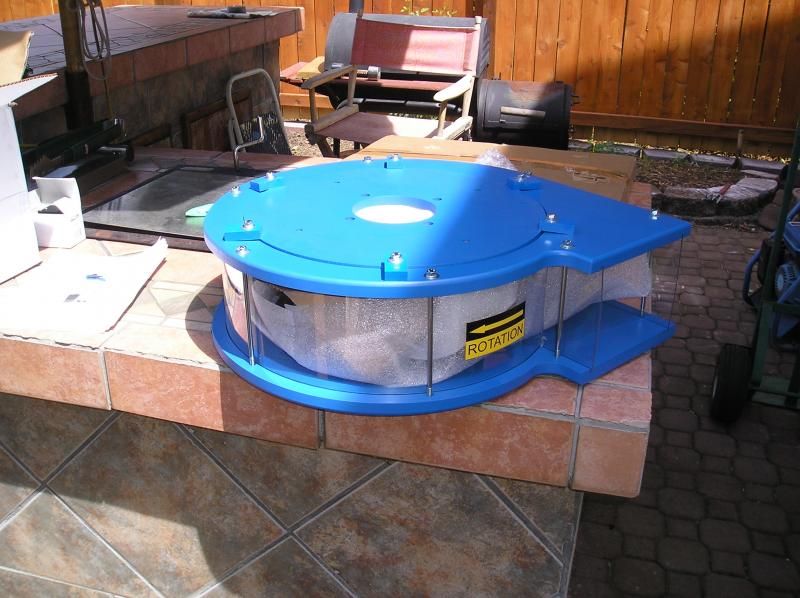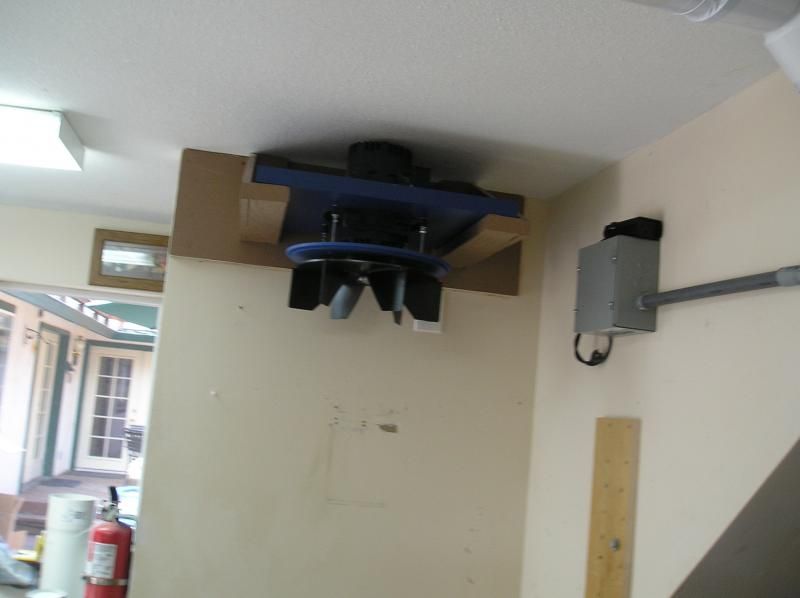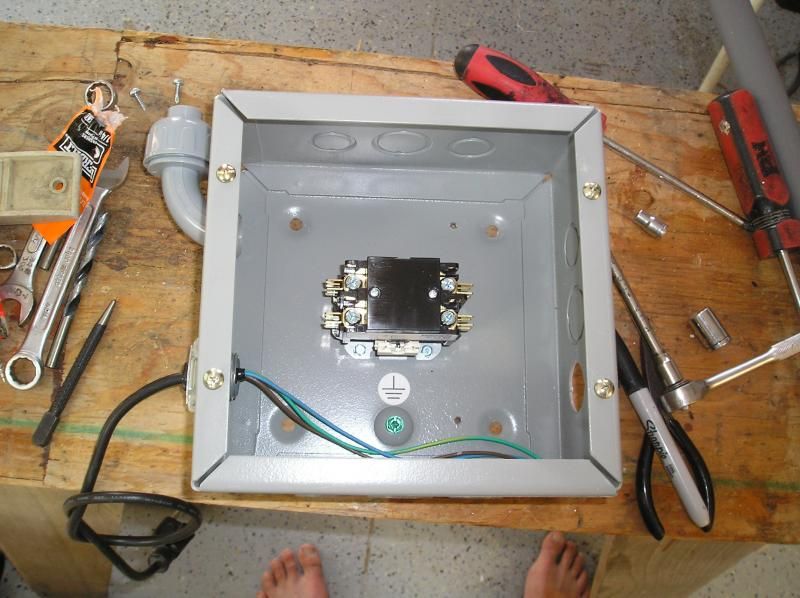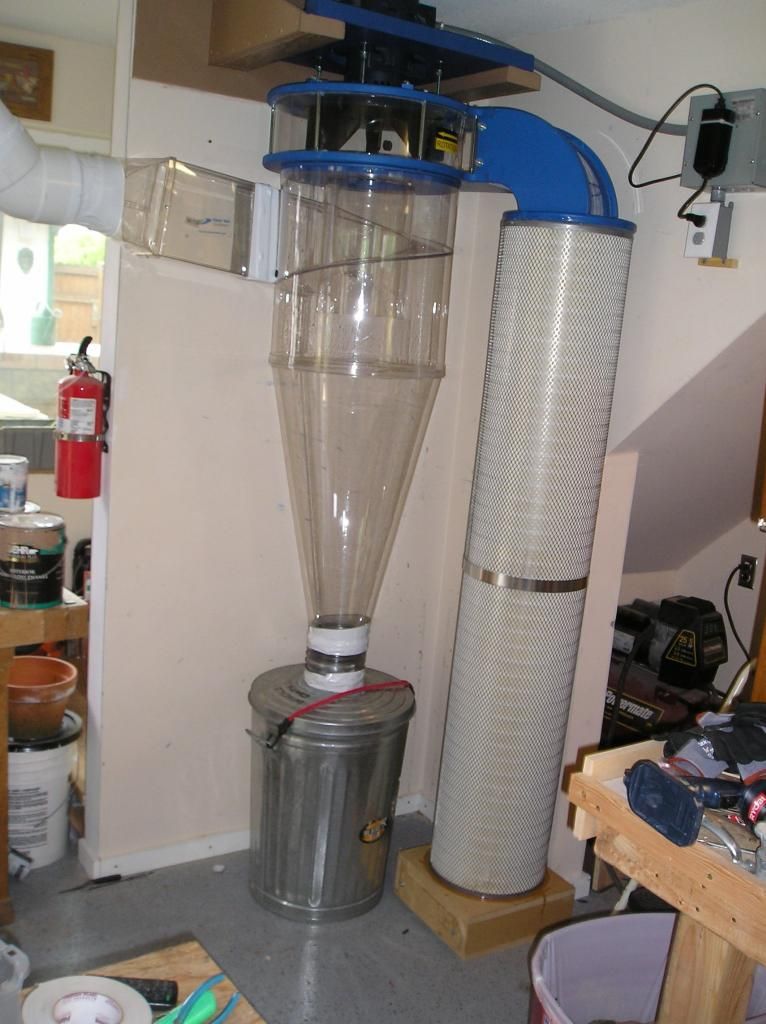I finally took the leap last week and ordered my CV1800 system. UPS says they will deliver it this coming Friday (July 18 2014) and I will proceed to start installing it.
I have not seen a complete installation thread up here so I decided to start one. I plan to photo-document my whole system installation as I go along. I already have my ductwork and rough electrical complete, and will post pictures of what I have done along with explanations as I go.
I am installing this system in my workshop that I built here on my property two years ago. It is a two story building with about 350 sq feet on each floor. Its built on a monolithic concrete foundation, and is heavily reinforced, has 2x6 insulated walls, and generally thoroughly sound proofed by design. We're in a residential neighborhood and I knew it was prudent to do all I could to keep this shop as quiet as possible. The second floor is storage and my studio while the whole first floor is my workshop. I have a solid electrical system that is well grounded and surge protected.
Originally I started out with a portable 4" bag style dust collector, and it worked well enough to get me through the first 2 years. Last Fall I caught a great sale on a 14" bandsaw I had lusted after for years and got it installed. It was clear from the beginning that the dust collector I had was completely inadequate to service my saw. I was doing quite a bit of resawing and even with the collector running, I had a cloud of fine dust in and around the bandsaw constantly.
I also built a vacume cabinet to mount my two sanders on. I built it to hook into the 4" dust collector hose, and each sander has a 2 1/2" short hose and blast gate. It works reasonably well but the fine dust it produces does not stay in the collector, whose bag is rated at only 30 microns.
The environment in my shop quickly deteriorated to the point that even with a good dust mask on at all times, I was having respiratory problems this Spring, and decided to shut down operations until I could upgrade the dust collection system.
I did a lot of homework on this. I have read all of the reference materials that Clear Vue has linked to, and all of it helped me tremendously to define the problem and develop the solution. The CV1800 is the solution.
I found the only other similar system out there is made from steel, and they warn you up front that the minimum shipping on it is $450!! The shipping from South Carolina to here in the Pacific Northwest was only $130...much more reasonable!
In any case, I am well along on the installation already and will be posting several more entries this week to show how I did my ducting, electrical system, and even some pictures of the trashcan mods I am doing today. Once the collector gets here I will thoroughly document exactly how I put it together. If anyone can benefit from having this information in one place, then it will be worth the effort.
Cheers!

I have not seen a complete installation thread up here so I decided to start one. I plan to photo-document my whole system installation as I go along. I already have my ductwork and rough electrical complete, and will post pictures of what I have done along with explanations as I go.
I am installing this system in my workshop that I built here on my property two years ago. It is a two story building with about 350 sq feet on each floor. Its built on a monolithic concrete foundation, and is heavily reinforced, has 2x6 insulated walls, and generally thoroughly sound proofed by design. We're in a residential neighborhood and I knew it was prudent to do all I could to keep this shop as quiet as possible. The second floor is storage and my studio while the whole first floor is my workshop. I have a solid electrical system that is well grounded and surge protected.
Originally I started out with a portable 4" bag style dust collector, and it worked well enough to get me through the first 2 years. Last Fall I caught a great sale on a 14" bandsaw I had lusted after for years and got it installed. It was clear from the beginning that the dust collector I had was completely inadequate to service my saw. I was doing quite a bit of resawing and even with the collector running, I had a cloud of fine dust in and around the bandsaw constantly.
I also built a vacume cabinet to mount my two sanders on. I built it to hook into the 4" dust collector hose, and each sander has a 2 1/2" short hose and blast gate. It works reasonably well but the fine dust it produces does not stay in the collector, whose bag is rated at only 30 microns.
The environment in my shop quickly deteriorated to the point that even with a good dust mask on at all times, I was having respiratory problems this Spring, and decided to shut down operations until I could upgrade the dust collection system.
I did a lot of homework on this. I have read all of the reference materials that Clear Vue has linked to, and all of it helped me tremendously to define the problem and develop the solution. The CV1800 is the solution.
I found the only other similar system out there is made from steel, and they warn you up front that the minimum shipping on it is $450!! The shipping from South Carolina to here in the Pacific Northwest was only $130...much more reasonable!
In any case, I am well along on the installation already and will be posting several more entries this week to show how I did my ducting, electrical system, and even some pictures of the trashcan mods I am doing today. Once the collector gets here I will thoroughly document exactly how I put it together. If anyone can benefit from having this information in one place, then it will be worth the effort.
Cheers!


